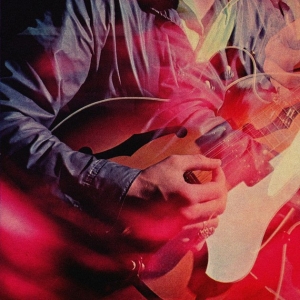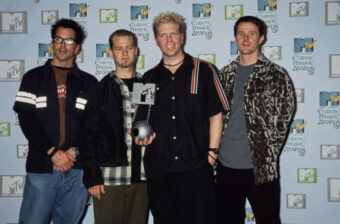Release Date: March 27, 2012
Label: Italians Do It Better
In the winter of 2007, while being interviewed for a SPIN story on the disco revival, Johnny Jewel talked about how that genre — early-’80s Italo-disco, in particular — had influenced his bands Glass Candy and Chromatics, plus the Italians Do It Better label that he still runs with Mike Simonetti. But instead of accentuating the music’s traditional dance-floor hedonism, Jewel gravitated toward its underlying textures: “Disco is like wallpaper, in a good way. Like Erik Satie.” Rather than Copacabana drum breaks and wailing divas, he heard disco as ethereal vocals and cloud-shrouded fantasias, the poppers of the 1970s replaced by 21st-century Ambien.
As a result, Italo-disco — full of neon-light synths, canned drums, and handclaps, fronted by stiletto-heeled femmebots delivering lines in stilted English — led Jewel and his Glass Candy muse Ida No away from the seedy glam-punk and no wave that defined their first early-aughts singles. What Jewel realized in embracing such a discarded strain of ’80s pop was that he didn’t have to abandon his previous aesthetics; he just encased them in showroom-dummy glass. (Meanwhile, Washed Out proved that Gary Low’s 125-BPM Italo cheese could be slow-food processed into the vegan-friendly theme to Portlandia.) The approach worked so well that Chromatics members Adam Miller and Ruth Radelet, eager to be similarly re-made/remodeled, ditched the noisier aspects of their earlier releases, bringing Jewel onboard full-time as a member/producer. The resulting 2007 album Night Drive resembled the Chromatics’ previous albums (on art-punk label GSL) in band name only, veering from brooding electro to moody ambience.
So it’s no surprise that Jewel moved toward that other type of musical wallpaper: film soundtracks. (Italo-disco deity Claudio Simonetti did the reverse, scoring horror flicks as a member of prog-gloppers Goblin before forming his even stranger electronic pop groups Capricorn and Easy Going.) Jewel was involved with the 2011 indie-sensation/Ryan Gosling vehicle Drive, though much like David Bowie and Brian Eno’s work on 1975’s The Man Who Fell to Earth, Jewel’s soundtrack didn’t make the final cut (Drive‘s incidental and discreet musical duties fell to Cliff Martinez). Bowie’s unused score filled side two of his 1977 album Low; similarly, Jewel channeled his own efforts into Themes for an Imaginary Film, some two hours of 3 A.M. Tokyo drift released earlier this year.
Another hour and a half of Jewel’s productions comprise Chromatics’ fourth studio album, Kill for Love, as sleek and stripped-back as anything he (or they) have ever done, especially during the first 30 minutes — densely cluttered peaks, glassy and steely enough to rival the Manhattan midtown skyline. There’s the echoing, glittery slap of “The Page,” cut with Miller’s moody Cure guitar lick. The chilly “Candy” contains just enough pulse to stay alive, but not one bit more. And “Lady” is just stunning — little more than a skittering keyboard figure, a bass throb, and a judiciously deployed finger-snap, all spaced far enough apart to drive a Penske truck through, as Radelet’s usual baby-ish voice grows to evoke someone a bit older, who’s just beginning to mature.
Jewel’s version of the Italo sound is most fully realized on the title track itself. A simple guitar line glides somewhere between a slick ’80s soundtrack and a siren song, synths vacillate between fluorescent glare and glorious incandescence, and a primitive metronomic pulse steadily accelerates like Gosling’s unnamed driver. Radelet, lyrically despondent yet still deadpan in her admission that she’d, yes, “kill for love,” lifts the song toward the bittersweet triumph endemic in this generation’s teen flicks, the climax for an imaginary film somewhere between Fish Tank and Winter’s Bone.
Let’s not cast Chromatics and Jewel as mere Italo enthusiasts, though. Any band bold enough to cover Bruce Springsteen (their forlorn “I’m on Fire” from a few years back was as scorched-earth as synth pop gets) and Neil Young (casting “Into the Black” as Kill for Love‘s desolate opener) know their musical heritage in both classic and art rock. The album cover itself pays direct homage to the krautrock band Ashra’s 1978 album Blackouts. And Chromatics aren’t strangers to modern R&B, either (here it results in the stolid Auto-Tune piano ballad “Running From the Sun”).
Yet the album mostly mirrors, appropriately enough, Low. Intense, shard-filled disco-pop gets juxtaposed with ambient tracks that slowly turn from concise palette-cleansers to memory erasers, from the eight-minute “Broken Mirrors” to the nearly invisible, nearly quarter-hour closer “No Escape.” It’s not uncommon for such artists to veer from beats to space — Aphex Twin deployed both select ambient works and drill ‘n’ bass, producers of dubstep and minimal techno emphasize what’s between the beat as much as what’s on it, Berlin’s Kompakt label annually releases their Pop Ambient series —. So, for Kill for Love to dissolve into near-nothingness is part of both its lineage and its pleasure.
Jewel, in fact, in that SPIN interview, noted that his productions are made for the wee hours: “At that point in the night, you’ve passed out or you’re done making love or whatever,” he mused. “That mindset opens the CD up for room ambience and conversation, and we step into the background — we slip away.”
The perfect crime.





